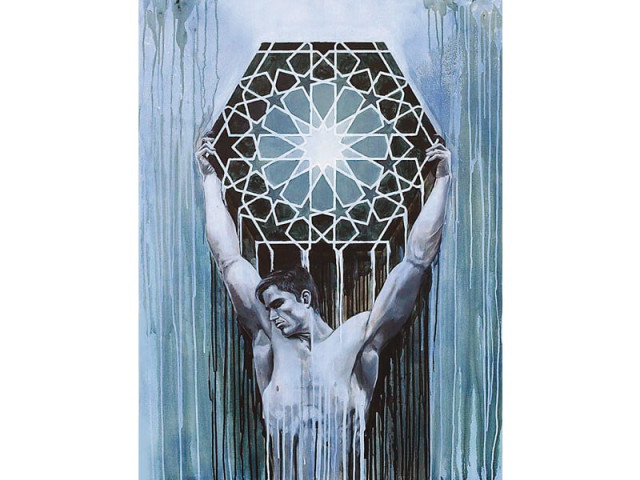Forgetting a Friend by Komail Aijazuddin
With his first exhibition at the Taseer Art Gallery, Aijazuddin plays with iconography.

The artist restrains his colour palette to produce astounding pieces of art. PHOTOS: PUBLICIT
“My process has since expanded to include Hindu and Buddhist iconography,” says Aijazuddin, “canons of art that used to be part of our shared visual history; we have now obliterated from our collective consciousness out of a misplaced search for identity.”
The collection comprises of twelve new works. Each individual piece is gripping and allows the viewer to get lost in its world. What captures one’s eye the most is Aijazuddin’s rendition of Klimt’s famous Kiss. Against a yellow backdrop the artist creates passion, romance and a sense of longing in his piece. Aijazuddin’s work is all about playing around with different symbols and merging them together to create his own language. It is interesting to note that, throughout his collection, there is a sense of mixed emotions in his characters. There is a conflict and a harmony in every piece. While the subjects look content, there is a flicker of longing lingers across their expressions.

It is the mark of a good artist when he can draw the viewer in on the expressions painted in his work. “Images like Material Girl and Ganesh, both based on Hindu deities are easier to place,” continues Aijazuddin, “but the fact that Ganesh is against a halo of geometric patterns struck me, because as a combination it was both theologically illogical and seamless.” In an effort to reclaim the Gandharan past, the artist limits his colour palates to hues of blue that can be found in the Gandharan stone. “I wanted to combine not only the image of Buddha with different traditions of ornamentation, but in the case of Greek Buddha, I tried to see for myself the rampant Greek influence on Gandharan art from Pakistan.”
Aijazuddin’s work sells for between PKR 80,000 - 425,000.
Published in The Express Tribune, December 18th, 2013.
Like Life & Style on Facebook, follow @ETLifeandStyle on Twitter for the latest in fashion, gossip and entertainment.


















COMMENTS
Comments are moderated and generally will be posted if they are on-topic and not abusive.
For more information, please see our Comments FAQ